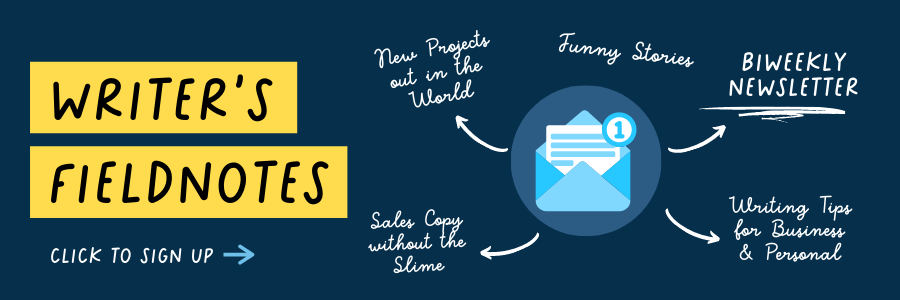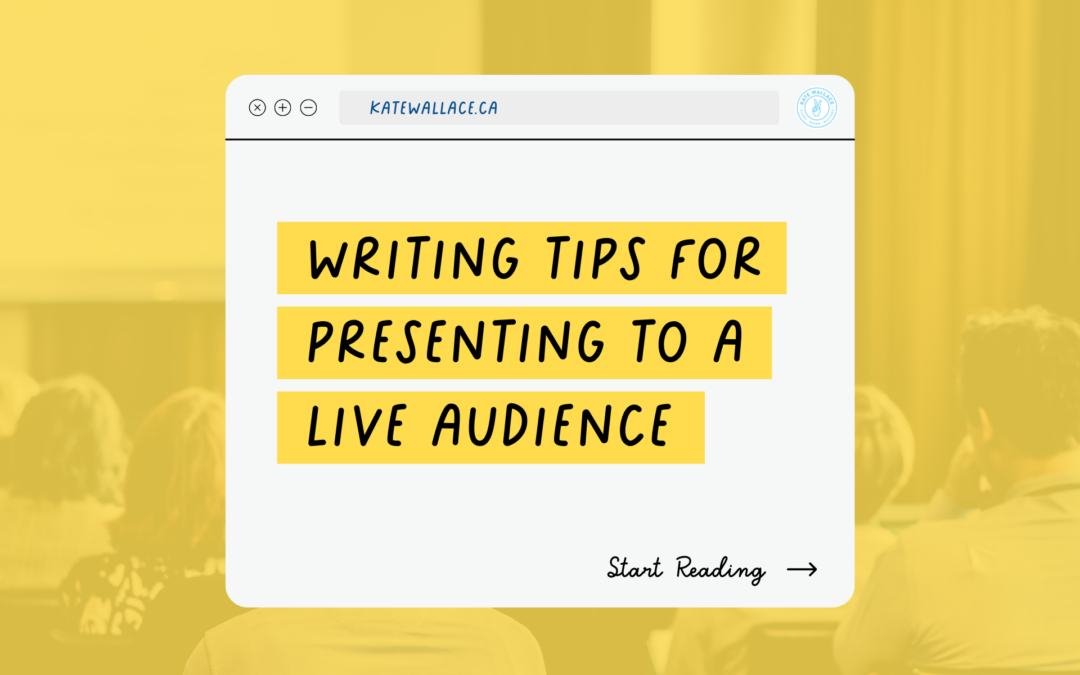Just when we’d become really comfortable with WFM, now we’ve got to get all “power casual,” find our car keys, leave the house, and return to the office.
As we emerge, there’s lots to re-learn: appropriate small talk at social gatherings, where to find your keys, and how to present to a live group, be it a quarterly update to your work unit, a pitch to funders, or as a conference speaker.
Exciting. But also? A little terrifying.
Odds are you’ve become accustomed to presenting over Zoom to an audience of floating heads (or worse, black squares). Your outfits were your best blouse paired with your worst sweatpants. You delivered the presentation into the ether, depending on emoji reactions and “great job!” Slack notifications afterwards to ease your uncertainty. But did you actually do a good job? Did people follow along? Did they even listen? Were you on mute the entire time, and no one noticed?
Cut to today, where you may be facing your first in-person presentation in months–or even years. Your palms are sweating at the mere thought of being in a room with other people, let alone having to speak in front of them.
If your self-doubt is rising, let me put you at ease. Presenting in front of real people in real-time is a much better alternative. Nothing compares to the immediate feedback you get from a room full of bodies.
In his recent piece for The New Yorker, David Sedaris writes about getting back on the road and reading to crowds of fans. It’s what he’s perhaps best known for and was unable to do over the last couple of years. He wrote about his initial resistance to Zoom, how he eventually relented to give a reading of new work on the platform:
“How did it go?” my lecture agent asked when it was over.
“I have no idea,” I told him. And it was true. Without a live audience—that fail-safe congregation of unwitting editors—I’m lost. It’s not just their laughter I pay attention to but also the quality of their silence. As for noises, a groan is always good, in my opinion. A cough means that if they were reading this passage on the page they’d be skimming now, and a snore is your brother-in-law putting a gun to your head and pulling the trigger. You are dead now. The evening is over.”
He could not be more right. Without an audience to test ideas and the magic of that live vibe, how will you ever know if you’re on the right track? And practicing in front of your mirror doesn’t count.
Presenting in front of a live audience gives the gift of real-time, real-honest editing. Yes, this sounds terrifying, but I promise it’s much more subtle than your imagination is telling you it is. Every noise, fidget, and reaction you’ll see and hear from your audience is a cue for how you can adapt your presentation in real-time.
Tips For Writing Live Presentations.

Keep it visual
Don’t underestimate how stimulating your presentation will be for your audience. Not only do they have to keep up with what you’re saying, they must also interpret your body language and unspoken physical cues, and deal with environmental distractions (buzzing overhead lights, sirens outside, their neighbour coughing on them).
Don’t project slide after slide of long-winded essays onto the screen behind you, or you’ll overwhelm and lose your audience.
When creating your PowerPoint, add in as many visual elements as possible. Graphs, charts, photos and even relevant or hilarious memes will help build a captivating and dynamic presentation people will remember.
Keep it simple
A presentation deck is no place for long and windy poetic paragraphs. A great rule to follow when creating your slides is the 6×6 technique: no more than six bullet points of no more than six words per slide.
The goal is to create concise lines of text. If you’re using commas and periods, you’re writing too much.
Keep it personal
A live presentation is an excellent opportunity to express yourself to colleagues or clients. Don’t forget to add an element of “you”, especially in your opening and closing remarks. Sharing personal (but relevant) anecdotes is a nice way to break the ice and make you and your audience both feel comfortable.
And consider your audience. Are you speaking to a group of people who are knowledgeable on the subject you’re speaking on or is it a room full of novices? Is it a mixed bag?
These are important things to consider, especially for the language you choose. Will you be isolating people by using certain jargon? Can you be more casual or is this a formal crowd? These small choices add up to make or break the engagement with your audience.

Keep separate notes
It can be really tempting to use your slides as your notes, but it’s important to remember that they are meant to keep the audience engaged, not for you to read from. Your slides emphasize what you’re saying. Tell your audience one thing, while showing them another.
A lot of presentation tools have a handy dandy side panel where you can add your notes that won’t be shown when projected to the crowd. Use them!
Let your presentation breathe
Live presentations need some air. Silence is truly golden. So make sure there’s some white space, line breaks and even ellipses in your speaking notes to indicate some pauses. It could be to take a moment for a joke to land or to emphasize a key point. It could be a pregnant pause at the beginning to gather your audience’s attention, or a little rest for all of the applause you’re going to get. You go!
And most important? Take a moment to appreciate the opportunity to be back in a room full of people. It really is a gift to get to share information and tell stories to a room full of living, breathing people. Sure, it can at first feel intimidating but after what we’ve all been through the last few years, it really is something to relish.




